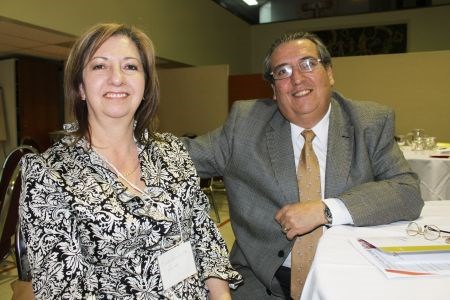Arriving in Timmins from Mexico City five years ago, Carlos Siller, a civil engineer who specializes in concrete, was lured to Canada by a work contract with De Beers. When it came time for his family to choose a permanent home, however, Sudbury became his family's destination of choice.
“Because we came with the family, and it was a strong change, we wanted to be together for a while,” explained his wife, Guadalupe Luna de Siller. “Our children were almost getting to the university age. We asked for a city that has a university, and the closest from Timmins was Sudbury, so we decided to settle down here.”
The Siller family is part of what Sudbury's Local Immigration Partnership (LIP) hopes will be a burgeoning trend in immigration for the city, and the organization has prepared a new settlement strategy to ease the transition for newcomers.
Creating a Sanctuary for New Citizens, the 106-page document prepared by the LIP, outlines tangible actions the city can take to create an environment that enhances diversity.
Employment, housing, education, language services, and social inclusion are amongst the areas of focus in the strategy, which will be implemented in collaboration with community groups, businesses, and associations. Input for the strategy was gleaned from a variety of stakeholder groups over the last three years.
LIP project coordinator Scott Fisher said diversity is key to the community's growth, and the aim is to make Sudbury the primary destination of choice for newcomers.
“I think we have a lot of advantages here,” Fisher said. “We have a lot of things that make Sudbury unique, a lot of things that we can be very proud of, and if we can use that to our advantage, I think we will be a destination of choice, which really is one of the key components of the report.”
Numbers from Statistics Canada show that immigrants prefer to settle in big cities, such as Toronto, Montreal and Vancouver, because of the job opportunities, services, and multiculturalism available. Only 31 per cent of immigrants settle in smaller cities, and six per cent choose small towns or rural areas.
Ontario's fairness commissioner, Jean Augustine, noted that rural communities are said to be dying, because of aging populations and young workers who are leaving home for better job opportunities. Immigrants want to be in areas where “millennium, forward-looking things are happening,” she said.
In 2010, 116 immigrants came to Sudbury, which is a stark contrast from Sudbury's early years.
“We know that there was a time when immigrants came to Sudbury in waves, to escape violence and poverty, to work in the mines and the forest,” Augustine said. “How can Sudbury again become a magnet for newcomers? This is your challenge.”
She cited its three post-secondary educational institutions, its medical and architecture schools, and its greenery and 330 lakes as “incredible” assets.
“Just these two assets—the educational hub and your beautiful surroundings—are surely magnets that should and will encourage people to settle here,” Augustine said.
The strategy is to be implemented over the next year and includes creating a one-stop referral service for newcomers, establishing a mentoring network with employers, and attracting more international students and scholars to make use of its educational hub.
Fisher said the strategy should be considered a “living document” whose strategies and actions will change and grow as the city changes and grows.
For the Sillers, Sudbury has proved to be a good choice. Carlos has established his own consultation company, CONSI, while Guadalupe runs Mrs. Vanelli's Fresh Italian Foods in the New Sudbury Shopping Centre.
They are now considered permanent residents and are actively pursuing Canadian citizenship. Along with their family, the Sillers miss eating traditional foods, but the relative quiet and security of Sudbury have been good tradeoffs for the frenzy of Mexico City.
Carlos believes life will be easier for his children, who are already integrating well into Canadian culture, but there continue to be adjustments.
“For sure there's a lot of areas that have to improve,” he said. “We have to learn to make mistakes because our culture is kind of different sometimes. But I think we made it and we're good; we're trying to go forward.”
Guadalupe said the LIP strategy is a good start to educating the city on what newcomers need to feel welcome in their adopted homes, and collaboration amongst community organizations and businesses will help see it through.
“I think most important is that everybody be aware that this is something that Sudbury needs; it's something that is happening in all of Canada, and it has to be in Sudbury as well,” Guadalupe said. “Everybody can be open-minded to receive and to be a welcoming city for immigrants, internationally and from other provinces.”




